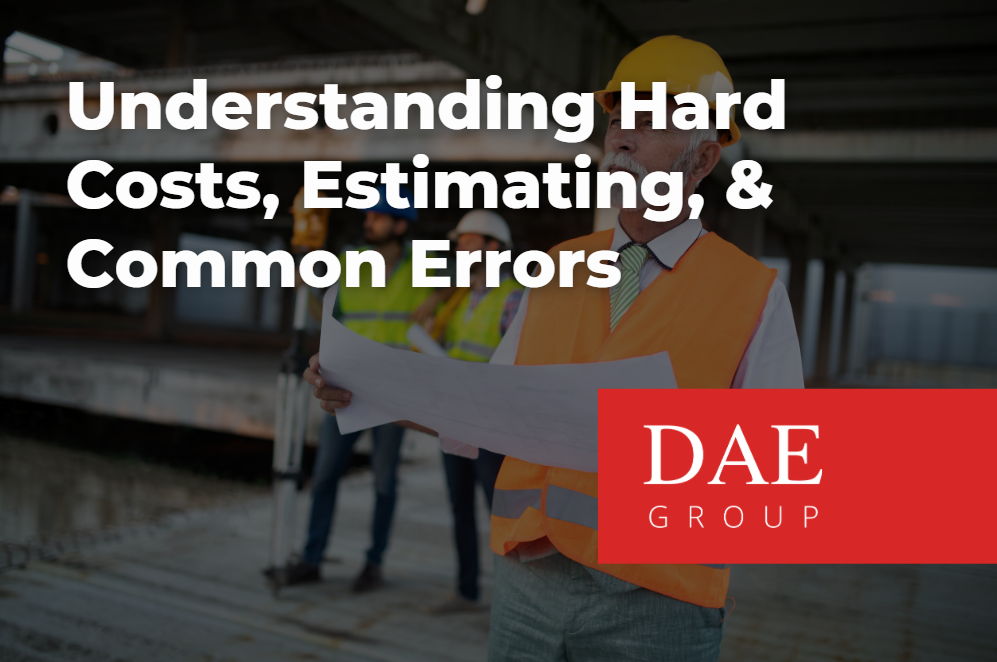Hard costs are often referred to as “brick-and-mortar costs,” and refer to any costs associated with the physical construction of the building or project,Under any equipment used, and any labor associated with the construction of the project. Because hard costs are more tangible they are easier to estimate.
Types of Hard Costs
Common hard costs are often broken out into different categories of costs. These different categories of costs may include the building structure, the site, landscape, contingency, change orders and overhead.
Hard costs for the building structure include all the labor and materials required to complete the whole building or structure. This includes things like the foundation, cement, steel, building shell materials, windows, roofing, HVAC, parking structures, and interior finishes if required. Labor costs include the general contractors and subcontractors such as plumbers, electricians, carpenters, cabinet makers, heating and cooling specialists, lighting, IT and security, etc.
Hard costs related to site work typically includes all utilities underground, water systems, sewer, drains, fire, grading, to name a few. More specifically site work can include testing the soil, surveying the lot of land and structural engineering assessments, leveling, upgrading foundations to be in line with the engineering requirements, arranging sediment control measures to prevent any pollution going down drains, connecting water supplies, drainage and other necessary services, in addition to all labor costs.
Hard costs associated with the landscape are based on the architectural drawings and include retaining walls and similar structures, grass, trees, mulch, shrubs, fertilizer, flowers, sprinkler systems, exterior art work if needed, etc.
Contingency hard costs are a reserved amount of money covering estimated unforeseen conditions that might affect the construction process such as weather or pandemics. Typical contingency estimates range between 5 and 10% of hard costs.
Some hard cost estimates include change order and some keep this out of the hard costs. While contingency hard costs are often not related to any specific area, change order hard costs are related to the building structure and relate to unforeseen costs during the construction project such as wind, hurricane, rain, snow delays etc.
Hard costs associated with overhead include such things as temporary facilities, additional staff and management, insurance, additional parking, permits for street use, etc.
Estimating Hard Costs: The Process
Hard costs are tangible and are quantifiable, The first step in estimating hard costs is to conceptual estimate. Conceptual estimates are “ballpark” preliminary estimates and are generally not very accurate. During this phase, contingency can be as high as 50%.
The second stage of the estimating process is when the preliminary design and budget is developed, providing a greater range of accuracy. This estimate is completed using historical information, bids, proposals, and contingency is now reduced to 20%.
The next stage is to develop a definitive hard cost estimate when the design is at 85 to 100% completed. During this phase contingency is at 15% as more details emerge from the construction drawings and bids are received, general conditions have been determined and escalation costs are also built-in in the estimate.
Finally, hard cost estimates are fully developed when complete plans, specs and contracts are received.
Common Mistakes with Hard Cost Estimating
Although hard costs are tangible and reliable estimates can be made, mistakes still occur. Some of the typical errors include underestimating how long tasks take resulting in scheduling delays and increased costs; neglecting the details which means you can’t estimate what you don’t know; not correctly anticipating current market conditions so that supply and demand affects your numbers regarding cost of materials, labor, and scheduling.
Some commonly overlooked items include dewatering of sites, temporary shoring, temporary protection and security, LEED testing, mockups, sales tax and access costs such as transporting labor, scaffolding, cranes, and material movement, management and storage.
Conclusion
Hard costs can typically account for roughly 60 to 75 percent of a total construction budget. Varying project specifications and changing economic factors can make estimating hard costs more difficult.
Since the accuracy of an estimate can make a difference in whether or not a project is feasible choosing an experienced owner’s representative, like DAE Group, can provide you with the confidence you need to bring your project in on-time and on-budget.

